Can you put brown sugar in coffee? Yes! And once you try it you might make the switch. In this post, you’ll learn about the taste and many types of brown sugar. But, how much should you use? And is it healthier to substitute brown sugar for white?
Let’s dig into all things brown sugar and figure it out.
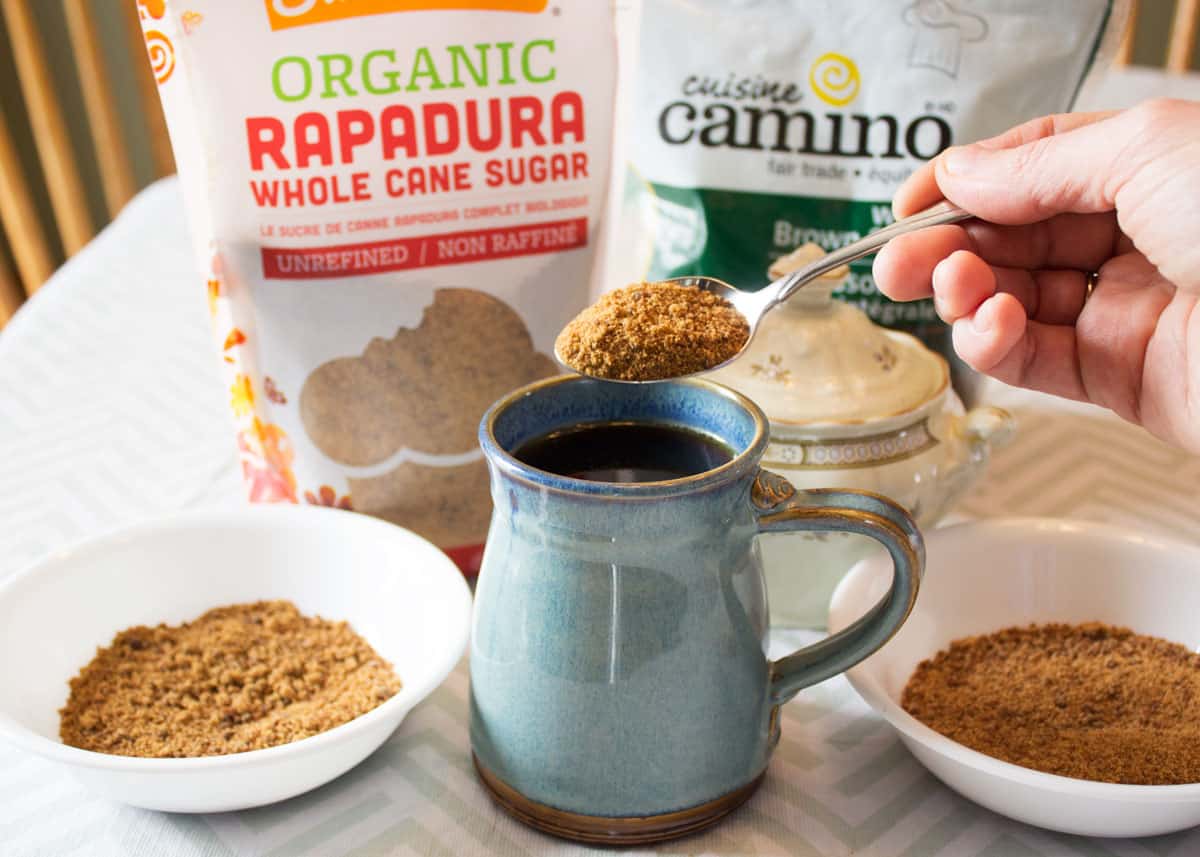
Guide to Using Brown Sugar in Coffee
Brown sugar tastes different than white, it contains molasses so it has a richer flavor. You can often taste hints of caramel, toffee, and of course molasses across the different kinds of brown sugar.
When we’re talking about brown sugar it could mean different things to different people. It may be light brown, dark brown, panela, or raw sugar – and because they all taste slightly different you may be wondering which kind is best.
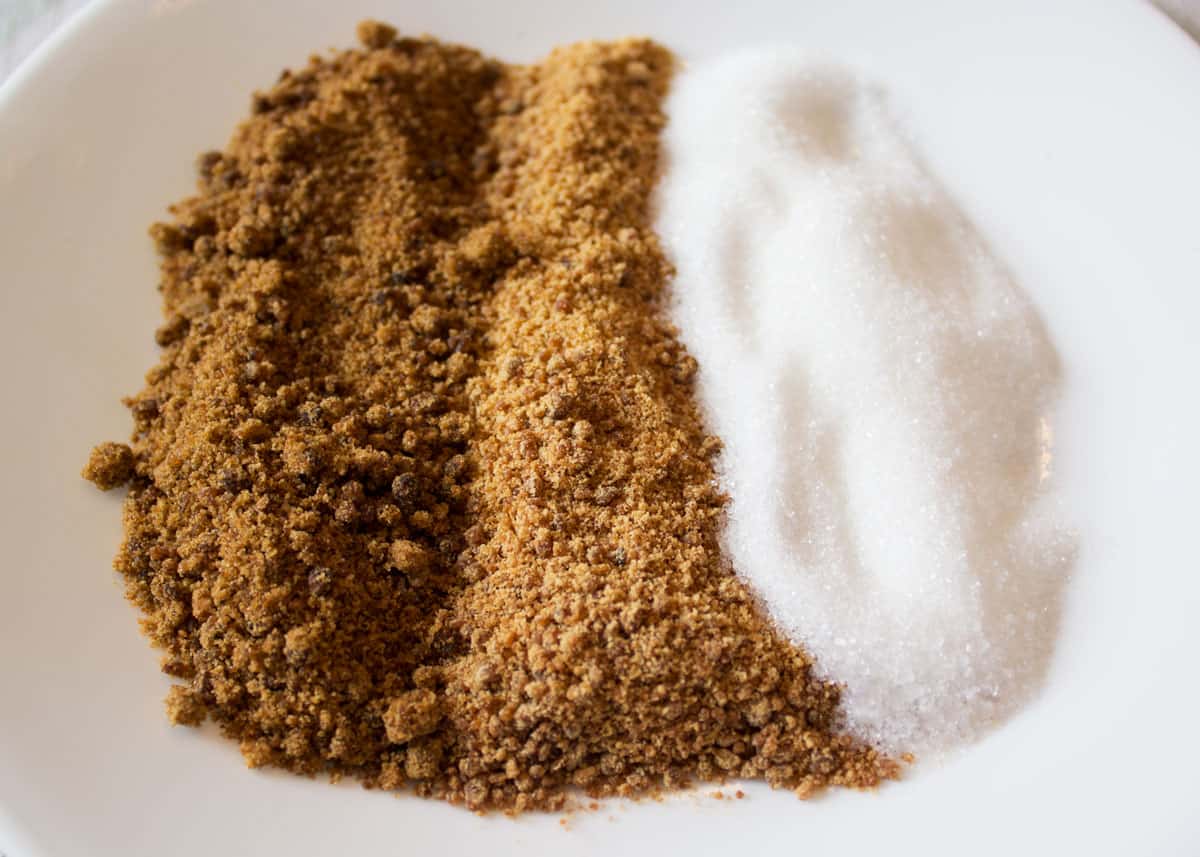
Can you put brown sugar in your coffee?
Yes, you can use brown sugar in your coffee. And some prefer the flavor over white sugar.
It has a deeper more complex flavor than white sugar and it retains more nutrients, so it may be slightly healthier as well. We’ll talk about brown sugar and health a little later in this post.
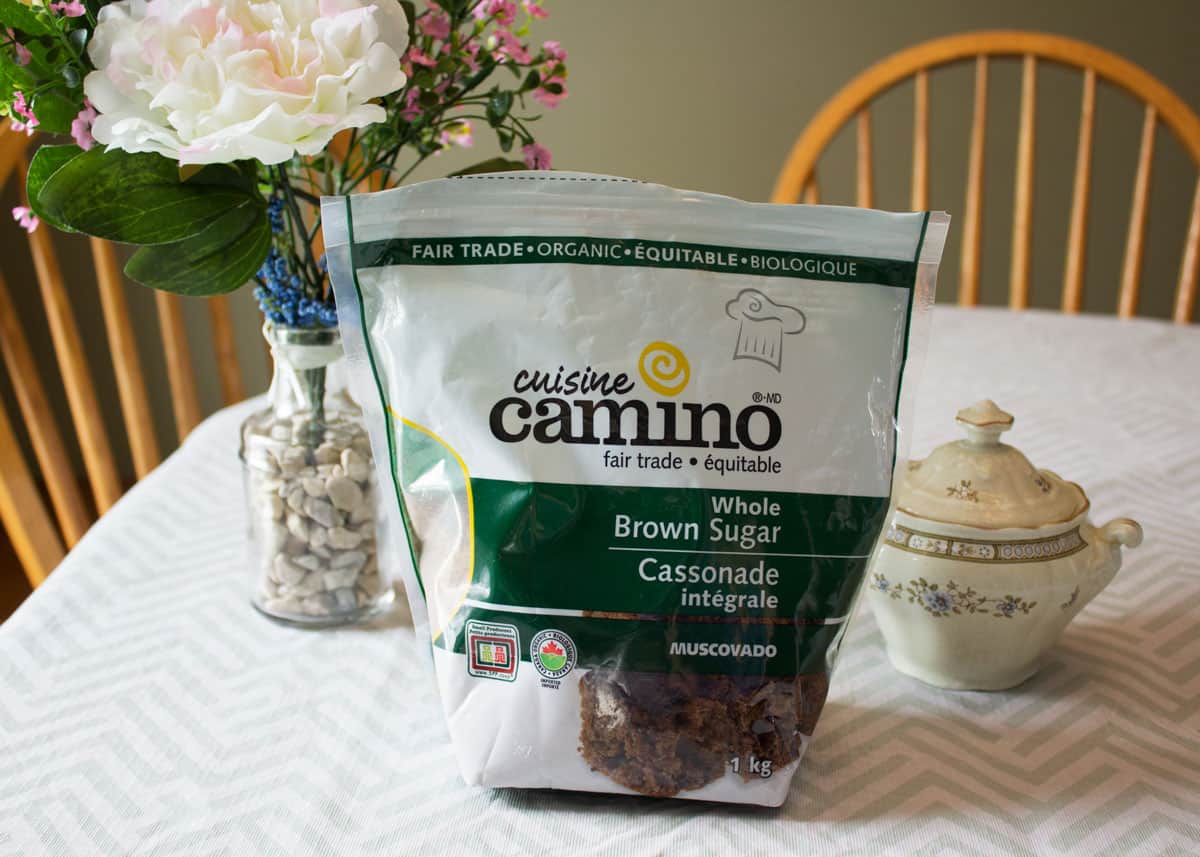
Does brown sugar taste good in coffee?
Taste is a very personal experience. As with many food items, what tastes good to one may taste weird or unpleasant to another.
Flavor preferences can also “grow” on you. I lived in Ecuador for six years and during that time I became accustomed to adding a natural brown sugar called panela to my coffee. Eventually, I favored the flavor over white sugar.
Many say that the flavor of brown sugar complements the flavor notes in coffee. It can be used in all your favorite coffee drinks.
I enjoy the flavor of brown sugar in my coffee, it blends well and has an earthy/natural flavor. I prefer adding maple syrup to my coffee but when it’s not available I’ll choose brown or raw sugar over white.
Compared side by side, a cup of coffee sweetened with brown sugar tastes more natural. The comparison makes the white sugared coffee taste a little fake, more like an artificially sweetened coffee.
That may sound odd, but that is what the comparison reminded me of. That being said, comparing an artificially sweetened cup to a cup sweetened with white sugar – I would choose the white sugar as tasting more “natural.”
Looking to add an even more unique flavor? Check out our post about putting honey in your coffee.
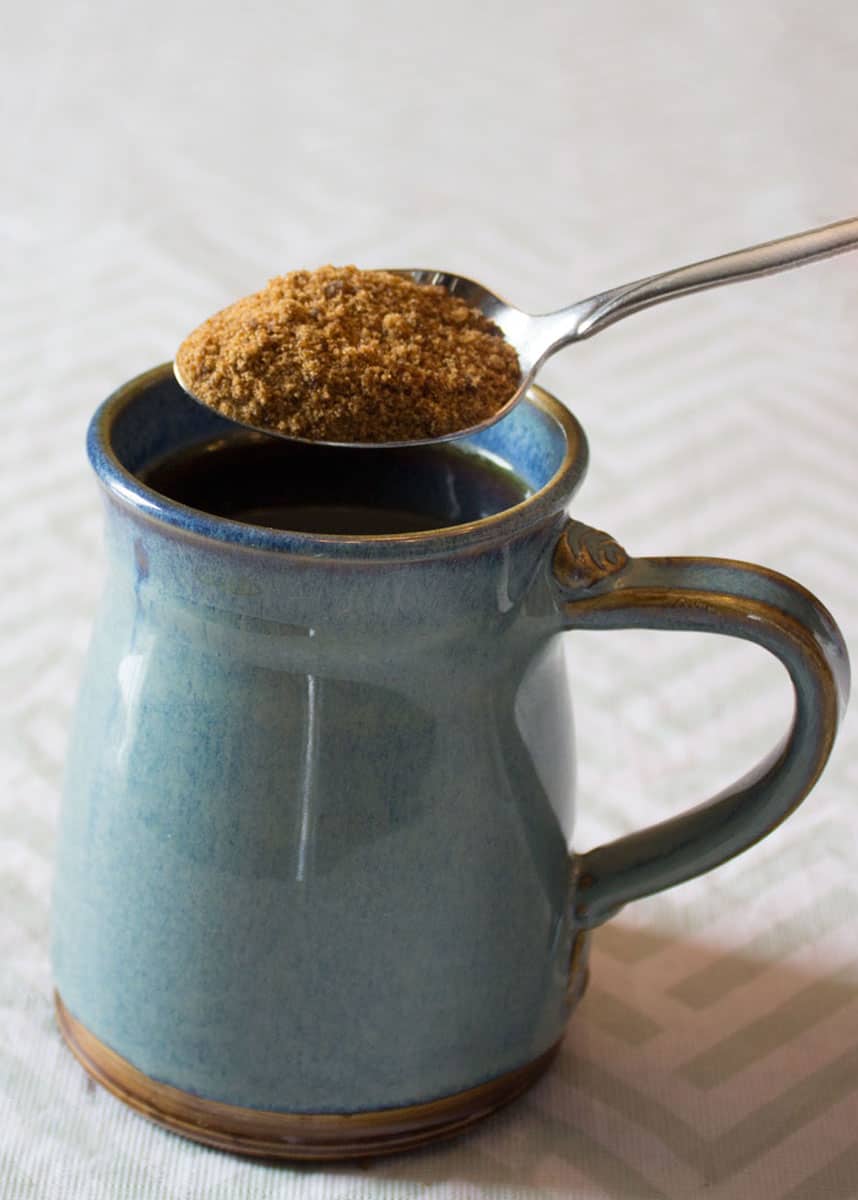
Let’s talk about how much brown sugar you’ll need and how it’s made.
Will I need less brown sugar than white?
Depending on the kind of brown sugar you use in your coffee you may use less than white sugar.
The richer flavor profile may help adjust the flavors in the coffee you’re essentially “covering up” by adding sugar. This may especially be the case if you are using natural brown sugar.
I usually only add 1/2 to 1 teaspoon of panela to a large mug of coffee.
Make sure you’re starting out with high-quality arabica coffee, the better your coffee the less sugar you’ll need.
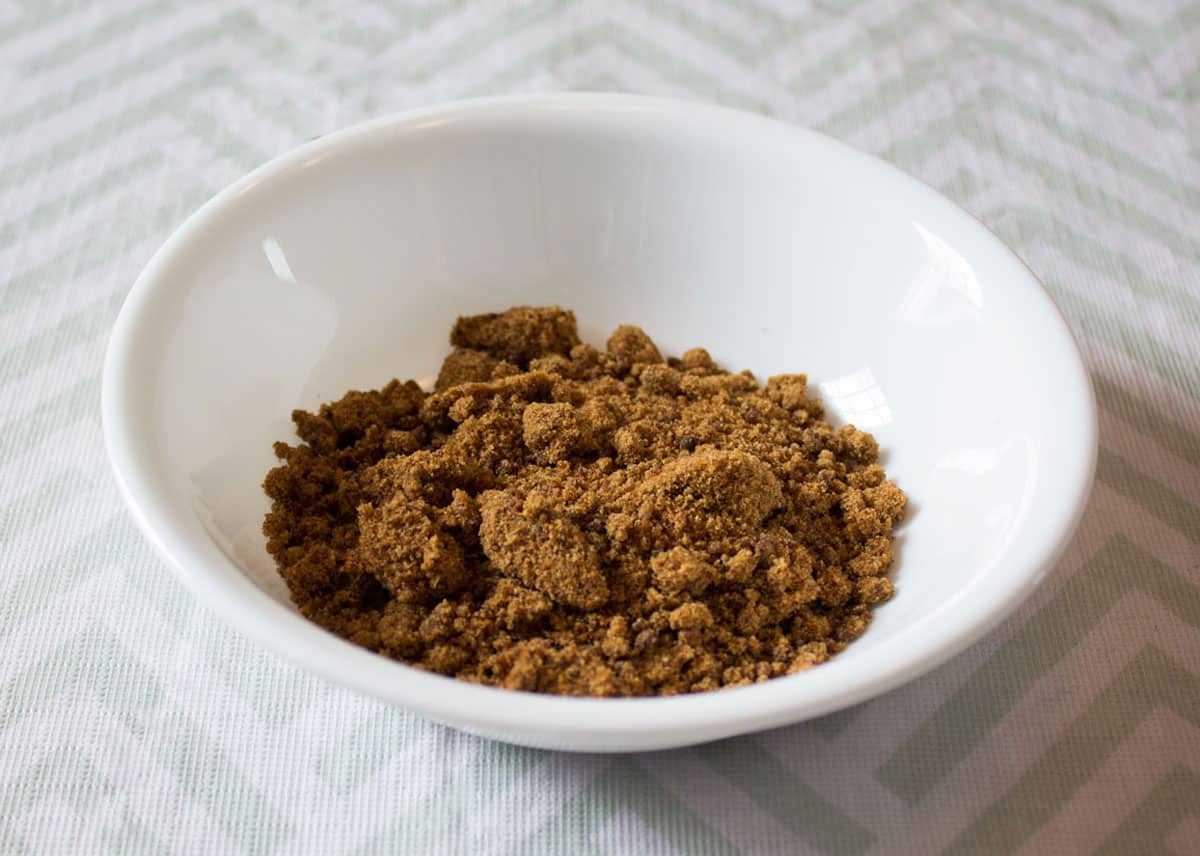
What is Brown Sugar?
Brown sugar comes from the sugar cane plant just like white sugar. They are usually refined the same way, most of the brown sugar on the market is just white sugar that has molasses added back after the refining process.
Brown sugar is usually made this way to control the amount of molasses and therefore the flavor of the end product.
Some specialty kinds of brown sugar are made before the sugar cane juice is removed. We’ll talk about those a little later.
When white sugar is made, the naturally occurring molasses (a thick dark liquid) is removed so that you are basically left with sugar crystals. With the molasses removed, it has a lighter color and flavor.
To make brown sugar (light and dark) the molasses is added back in various amounts.
Light vs Dark Brown Sugar
- Light brown sugar is 3.5% molasses
- Dark brown is 6.5% molasses
The higher the percentage of molasses the more flavorful the brown sugar. Does that mean it tastes better? That depends on your flavor preferences.
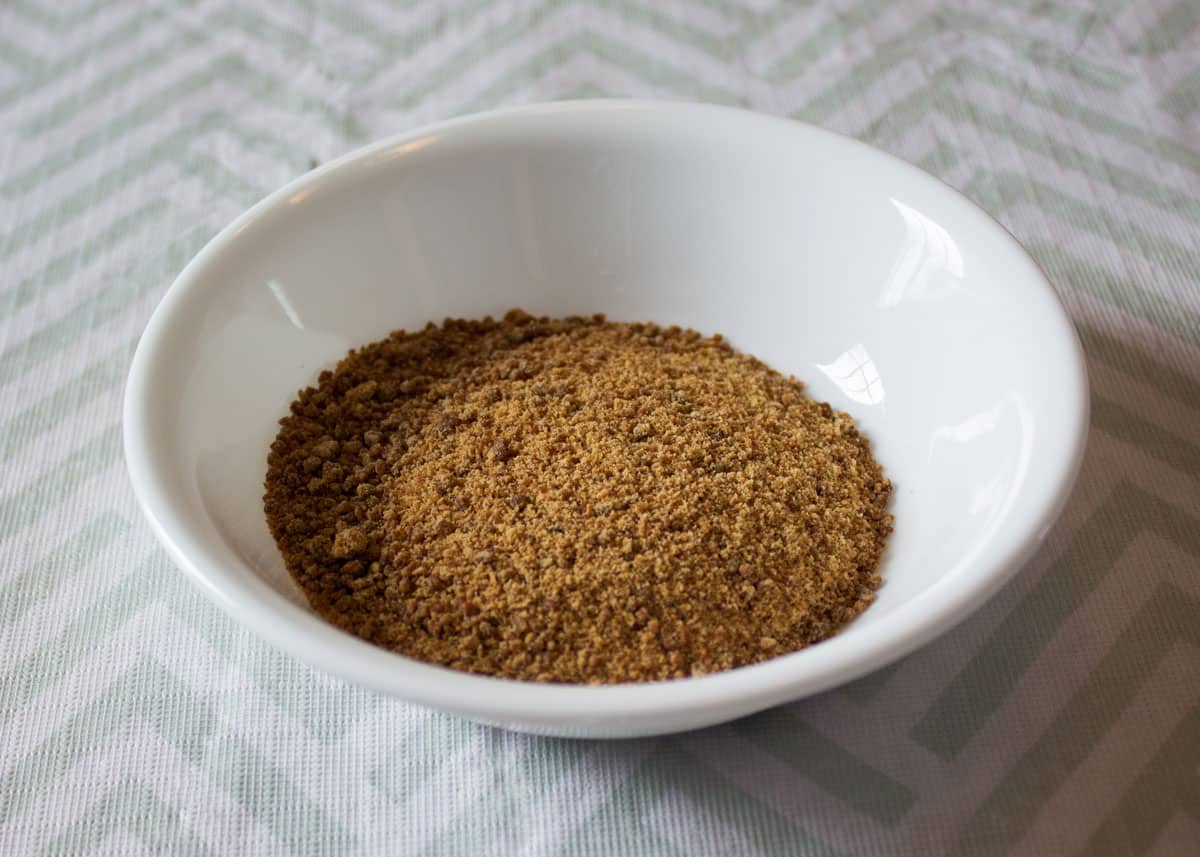
How to make brown sugar at home
It’s pretty easy to make brown sugar at home – as long as you have some white sugar and some molasses.
A brown sugar recipe usually calls for one tablespoon of molasses for every cup of white sugar. You just add the molasses to the sugar and mix really well.
That ratio will make a light brown sugar, if you want it darker just mix in more molasses.
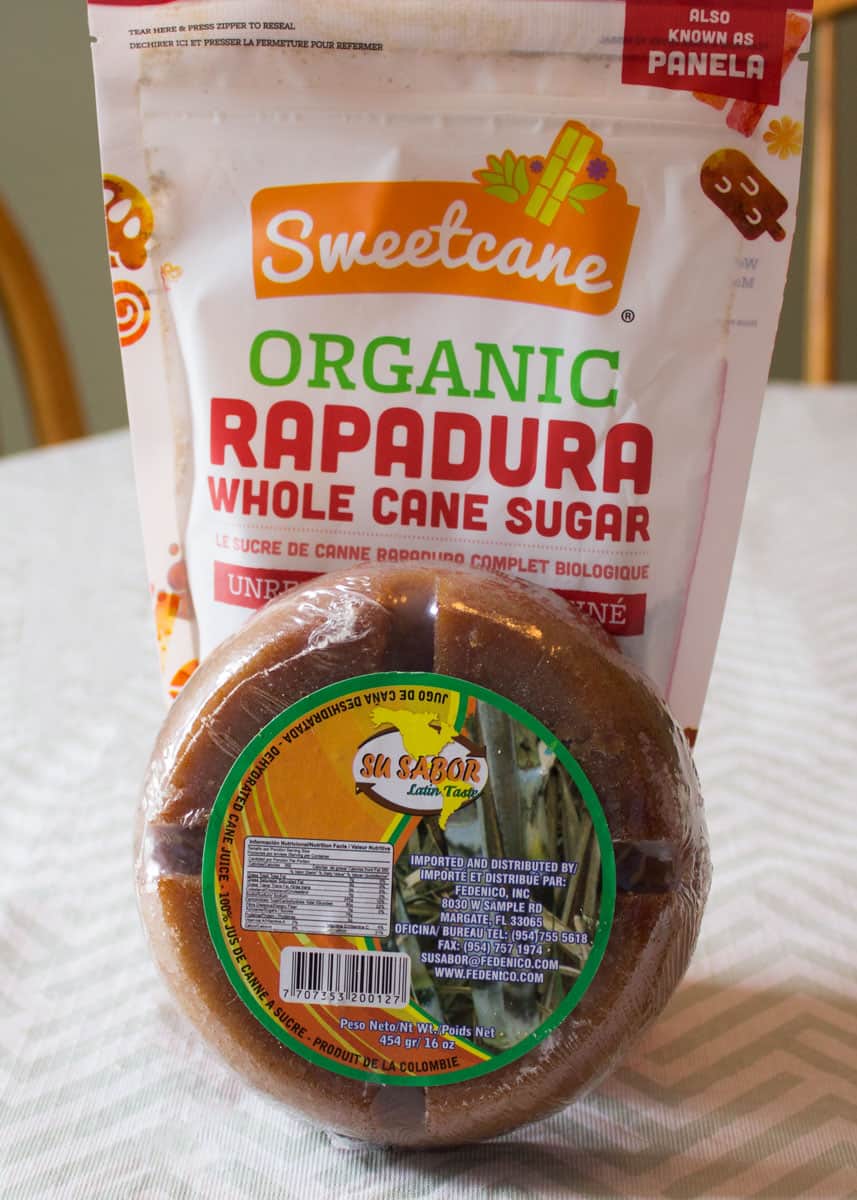
What are Natural Brown Sugars?
Most of the brown sugar available in North America is highly refined. But there are also natural brown sugars.
Natural brown sugar is less refined, so rather than having molasses added back, it is produced before all the sugar cane juice is removed.
Wondering about the difference between molasses and sugar cane juice? This article explains that and why they have different flavor profiles.
8 types of natural brown sugar
Muscovado
- Piloncillo
- Chancaca
- Jaggery
- Panela
- Turbinado
- Demerara
- Raw sugar
The first five on the above list are generally less refined than the last three. All are less refined less than white and highly manufactured brown sugar.
All have distinctive flavors, varying amounts of molasses/sugar cane juice, and different textures.
Some, like the panela in the above picture, come in a granulated or solid form, some are also available as a syrup.
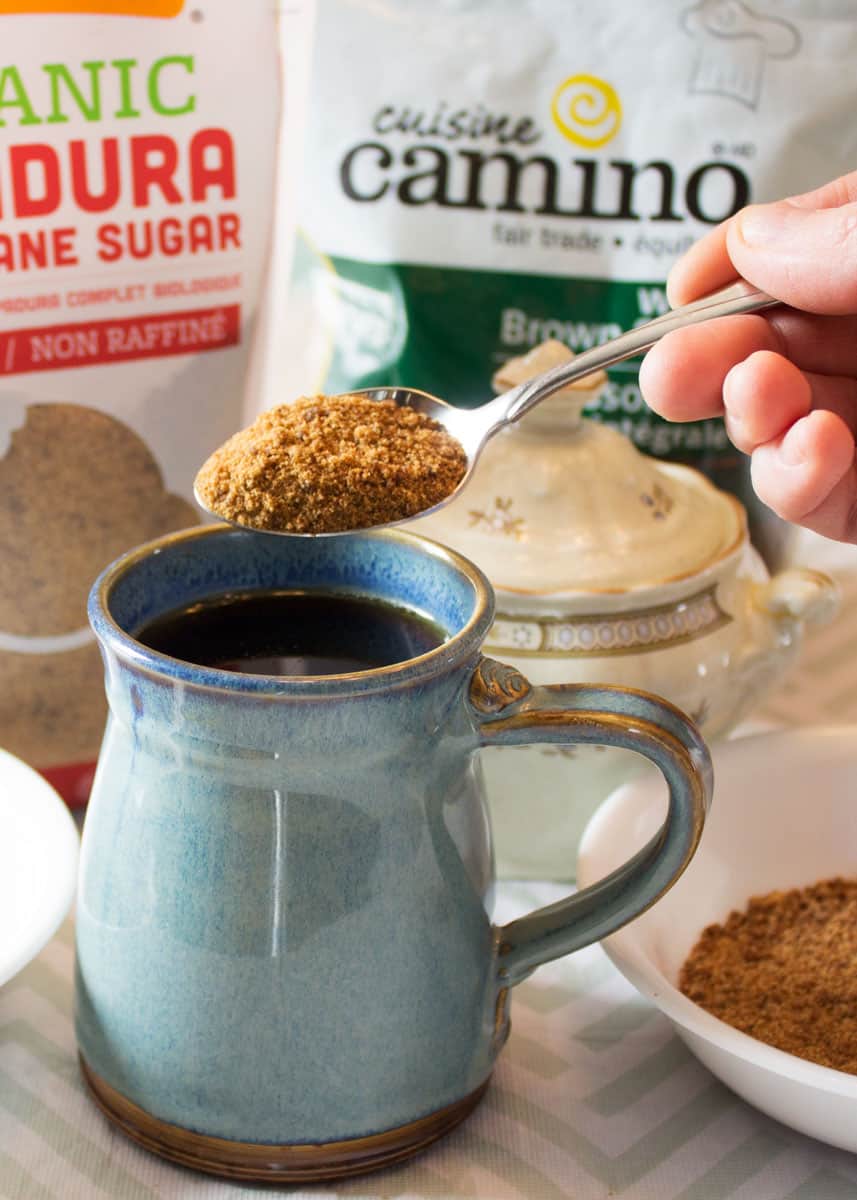
Is brown sugar healthy?
Is brown sugar more healthy than white sugar? Technically – yes, but not really.
Brown sugar will have trace amounts of iron, calcium, potassium, and magnesium.
Sugar that has molasses remaining in it will have more minerals than sugar that doesn’t, but because of the amount of these minerals, it won’t impact your health in any significant way.
In other ways, it’s basically the same, calories, carbohydrates… so maybe a little different – but not much “healthier”.
If you’re looking for a healthy way to sweeten your coffee check out these healthy alternatives to sugar.
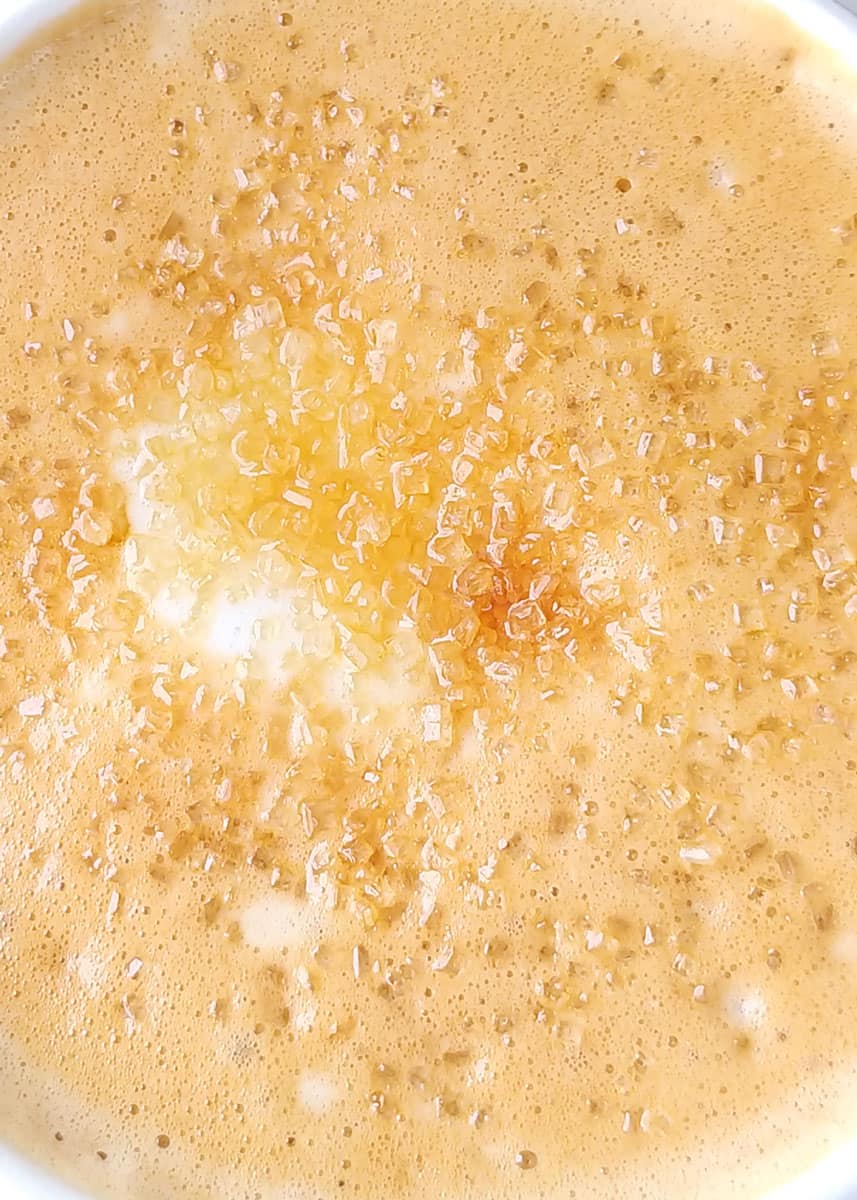
What is raw sugar?
If you like going to cafes than you’ve probably seen raw sugar packets alongside the white sugar. But what is raw sugar?
Raw sugar is less refined than the highly manufactured white or brown sugar on the market. But it is still processed, not truly “raw.”
It is made from sugar cane juice that is crystallized and partially evaporated. It has larger crystals than the more refined sugars. Almost all of the sugar cane juice is removed by spinning it in a centrifuge.
It has a lighter flavor than brown sugars that have a higher sugar cane juice/molasses content.
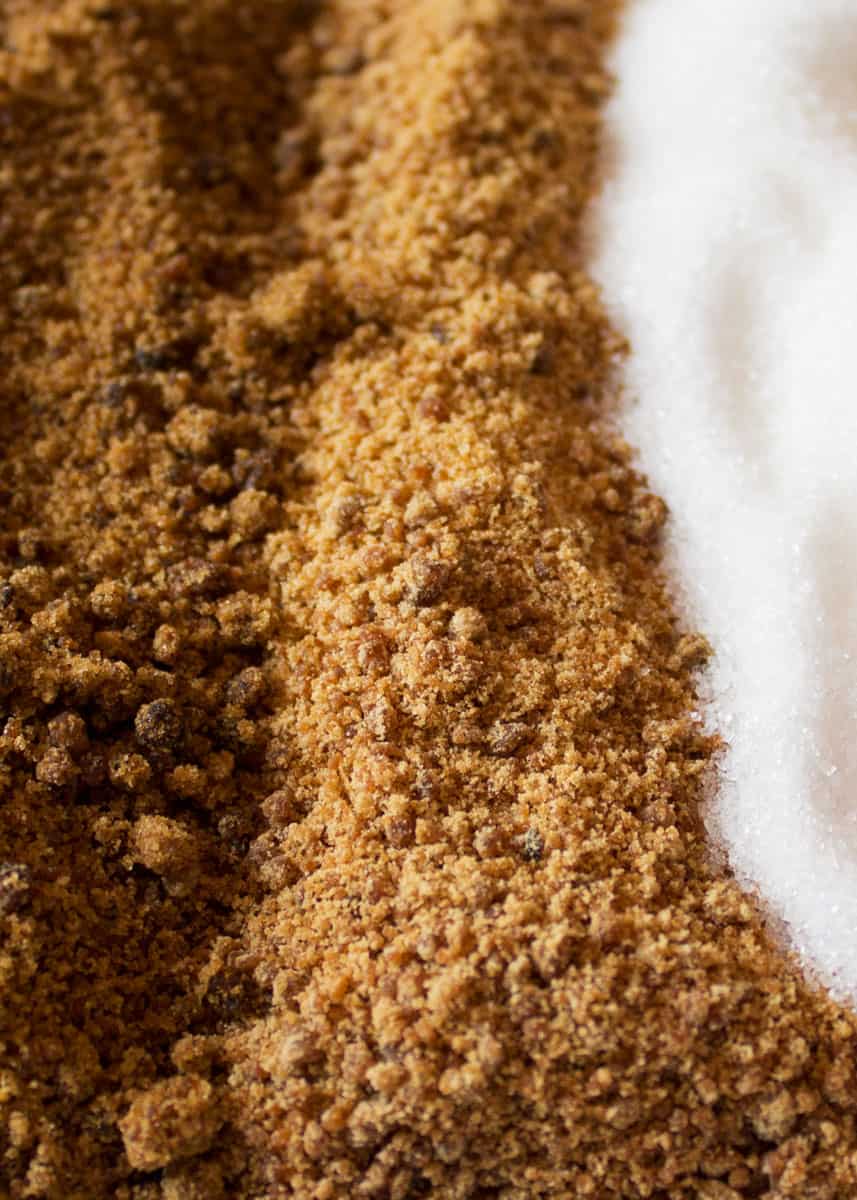
Why use brown sugar in coffee?
You may want to use brown sugar in your coffee if you like a more complex flavor profile.
Brown sugar in coffee, whether it is highly refined or not will add a more earthy/natural sweet flavor to your coffee.
Experimenting with different kinds of brown sugar will open you up to new flavor experiences. So will trying different brew methods. Finding your perfect brew method and sweetener combo is delightful. Mine changes depending on my mood, or how much time I have. 🙂
You might try the natural food section at the grocery store, or your local health food store to find some of the natural brown sugars for coffee mentioned in this post.
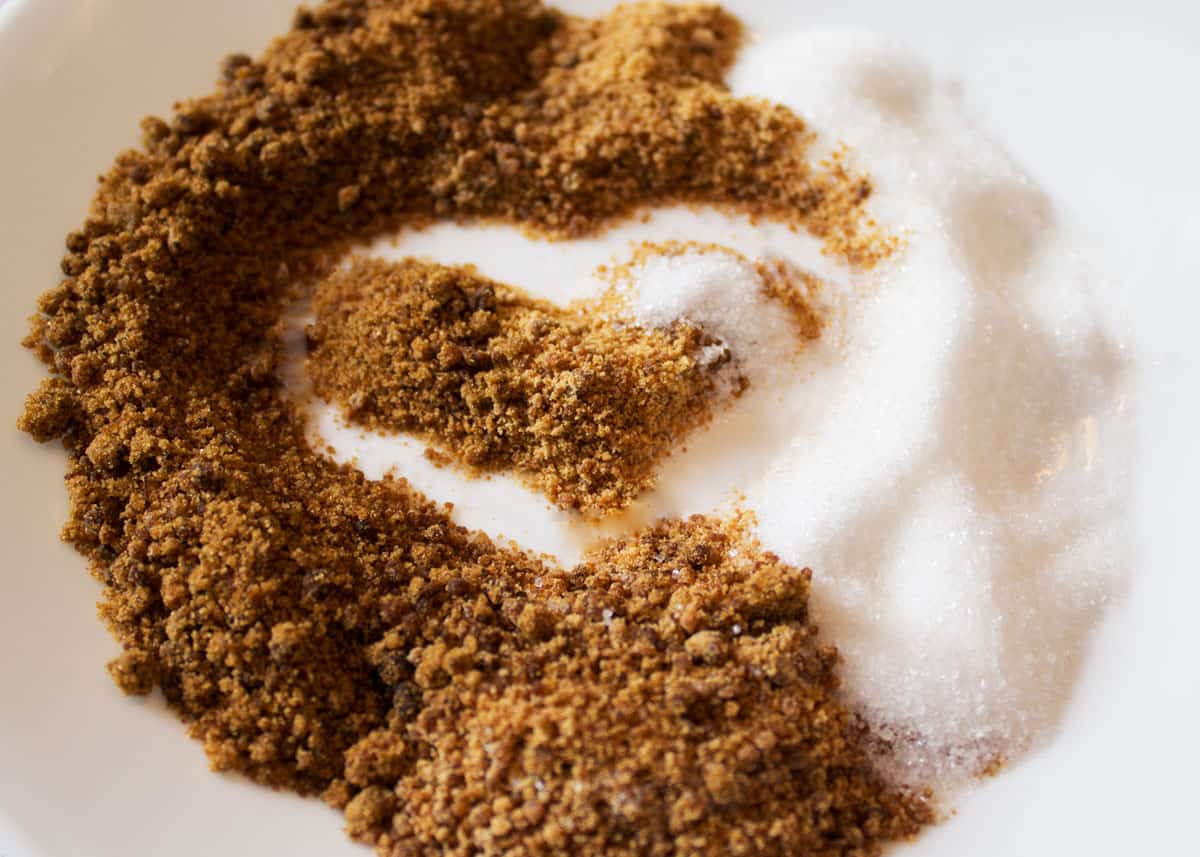
Will You Try Brown Sugar?
What do you think, do you want to give brown sugar in coffee a chance?
If your goal is to start using less refined ingredients go with a natural brown sugar. Try starting with turbinado or panela. You may be pleasantly surprised by how well the flavors combine with the roasty flavor notes in coffee.
You may even notice that raw sugar complements coffee a little better than white.
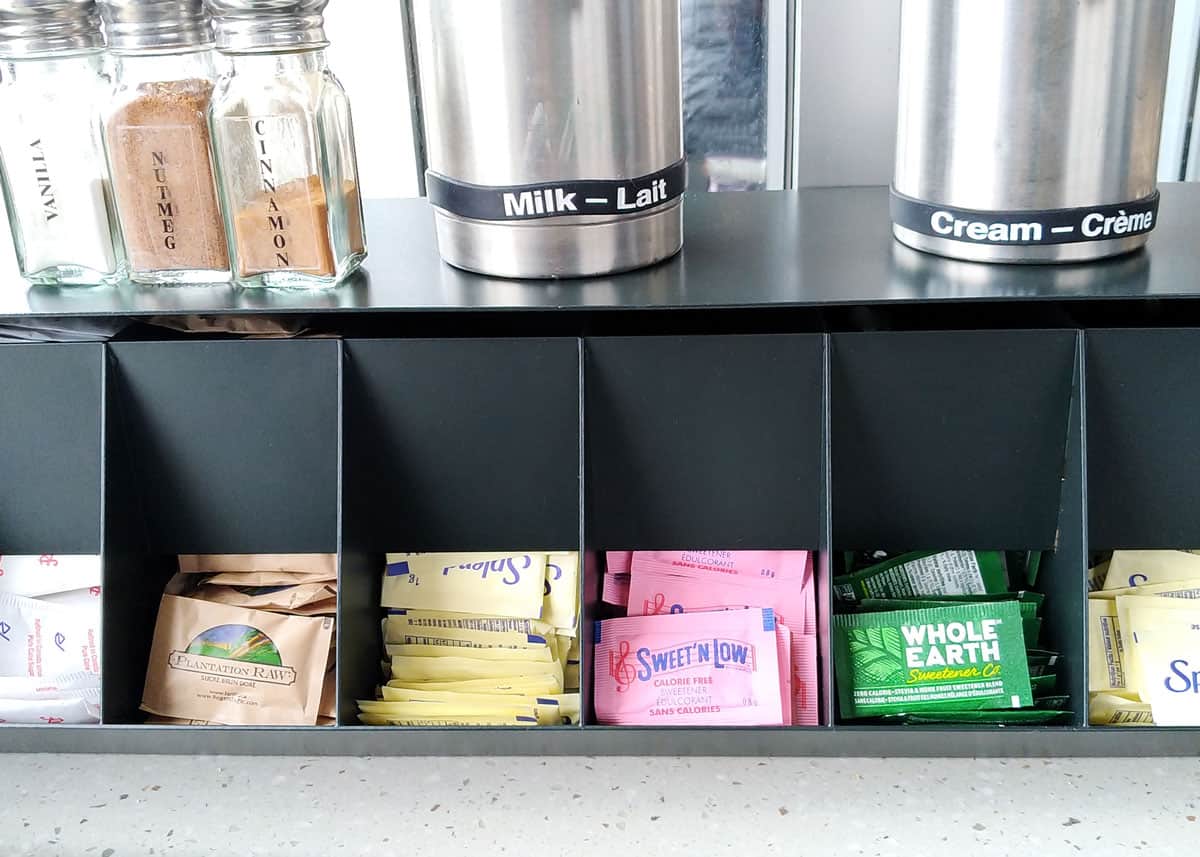
Do you put brown sugar in your coffee? What kind do you like best? Please share by commenting on this post.
- About the Author
- Latest Posts
Dena Haines is a co-founder and blogger on EnjoyJava – and is working to make it the best coffee blog in the world.
She also blogs about travel at Storyteller.Travel and photography at Storyteller Tech. Dena is a partner at Storyteller Media, a publishing company she started with her husband, Bryan.

Shara
Sunday 22nd of October 2023
Which is best with coffee light brown sugar or dark brown sugar?
Bryan Haines
Wednesday 29th of November 2023
When I add sugar, I prefer dark brown - like panela.